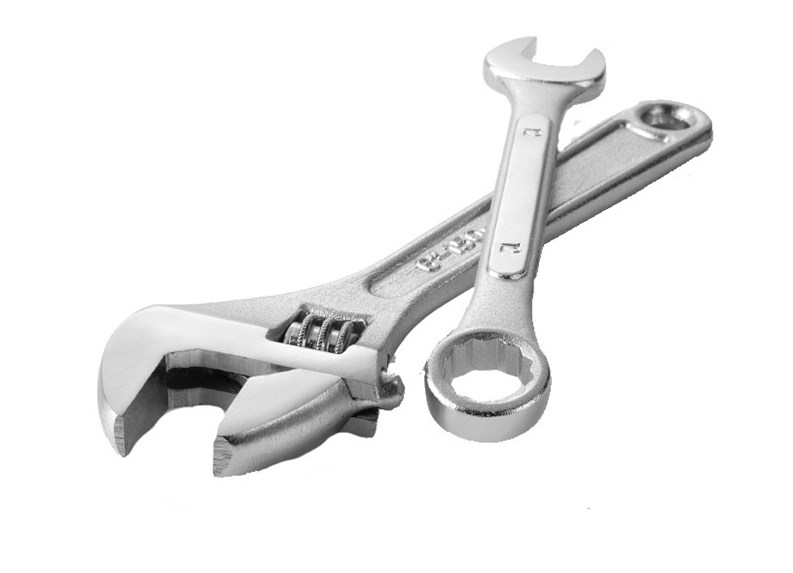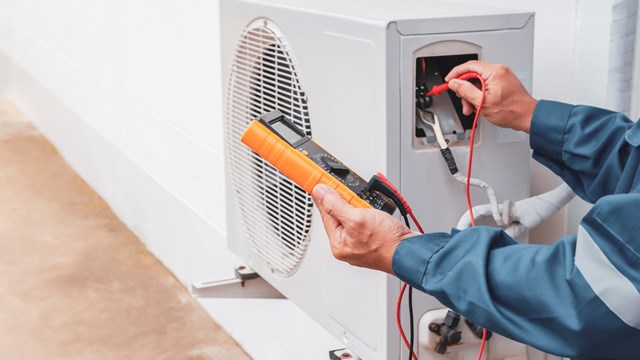In the future, we might have molecular transporters or some other newfangled invention defying the laws of gravity, but for some 150 years, Elisha Graves Otis' method of transport - the elevator - has stood the test of time.
Since the beginning, mankind has always had the need to move animals, objects or materials from one place to another. Historians believe that it was probably the Egyptians who first developed an intricate hoist system to build the pyramids, as many of the building blocks in the Great Pyramid of Cheops at Giza, Egypt, weighed well over 200,000 pounds. Some accounts cite that 4,000 stonemasons and 100,000 laborers were needed just to lift the huge stones into place. These hoisting inventions provided the genesis of what is today the modern elevator.
There are two basic types of elevators in use today - hydraulic and rope-driven. A rope-driven elevator contains six to eight lengths of wire or steel cable - the hoisting ropes - which are attached to the top of the cab and wound around a drive sheave in special grooves. The other end of the cables are attached to a counterweight - a collection of metal weights equal to the weight of the car and about 40 to 45 percentage of its rated load - that slides up and down the shaftway on its own guide rails. So the weight of the elevator and the total mass of the counterweight acts in balance - sort of like a see-saw - to press the cables down on the grooves of the drive sheave. In a gearless traction elevator, the motor rotates the sheaves directly; in geared elevators, the motor turns a gear train that rotates the sheaves.
Chains or cables loop through the bottom of the counterweight to the underside of the car to help maintain balance by offsetting the weight of the suspension ropes. Guide rails that run the length of the shaft keep the car and counterweight from swaying or twisting during travel. Rollers are attached to the car and the counterweight to provide a smooth ride along the guide rails. An electric motor then turns the sheave, producing enough revolutions per minute to make the car slide up or down. These motors are able to precisely control speed, and allow for the elevator's smooth acceleration and deceleration. Intricate signal switches also stop the cab at each floor level. Roped elevators are much more versatile and efficient than hydraulic models, and typically have more safety features.
In a hydraulic elevator, the car is lifted by a hydraulic-fluid driven piston mounted inside a cylinder. The cylinder - containing oil or a similar substance - is connected to a pumping system. The pump forces fluid into the tank leading to the cylinder; when enough fluid is collected, the piston is pushed upward, lifting the elevator car on its journey. When the car is signaled that it is approaching the correct floor, the control system will trigger the electric motor to gradually shut off the pump. To get the elevator to descend, the control system will send a signal to the valve operated electronically by a solenoid switch. When the valve is opened, the acollected fluid flows out into a central reservoir, and the weight of the car and its cargo pushes down on the piston, driving more fluid out and causing the cab to move downward. The control system will signal the valve again for it to stop at the correct floor.
One of the most important features, of course, are the safety mechanisms. The first safety is the use of multiple strands of cable, meaning that if one broke, the others will hold the car up; and, secondly, safety clamps activated by a governor, would automatically kick in if the elevator failed and started to overspeed too quickly.
Governor systems are built around the sheave located at the top of the shaft. The governor's rope is looped around weighted sheaves, and the rope is connected to the elevator car, moving when the cab goes up or down. In some systems, the sheaves are controlled by a pair of flyweights that swing freely back and forth on the governor. As the rotary movement of the governor builds up, centrifugal force pushes the flyweights outward, where they catch the hooked ends of ratchets - Otis' original design - attached inside the stationary cylinder surrounding the sheave. This in turn, stops the governor, and thus, causes the ropes to activate a lever, which operates the brakes or safeties. When that happens, the elevator car is gradually brought to a stop.
Elevators also have electro-magnetic brakes that engage to stop the elevator and secondary automatic braking systems are installed at the top and bottom of the elevator shaft, which stop the car from moving too quickly in one direction or another. And, should all else fail, shock absorbers are positioned in the bottom of the shaft to cushion a cab's fall.
The workings of the elevator began simply enough with rope. Around 236 B.C., the Greek mathematician and scientist Archimedes invented a compound pulley device in which ropes were coiled around a winding drum by capstans and levers. Crude hoisting platforms, which might be the first passenger-type elevator, were also used by the Romans to transport the gladiators and wild animals into the Coliseum arena, according to "Tell Me About Elevators," a booklet describing the history of elevators published by The Otis Elevator Company.
By the time Vermont-born Elisha Graves Otis came on the scene in 1811, the Industrial Revolution was in full swing and James Watt had developed the steam engine, which was a major breakthrough in powering all types of machinery. In 1835, steam power operated a contraption called a "teagle," an elevator that was used to haul freight in an English factory. Ten years later, Sir William Thompson developed the first hydraulic-powered elevator, paving the way for Otis and others to improve on the idea of passenger transport, according to Elevator World.
Otis was a reluctant farmboy and tinkered with every piece of machinery he could get his hands on, according to Jason Goodwin in his book, "Otis: Giving Rise to the Modern City," an historical account of the Otis Elevator Company. Going from job to job, Otis soon landed at a Yonkers, N.Y. factory that made bedstead rails. By 1852, commercial freight elevators were being installed around the country by the George H. Fox and Co. of Boston. The Fox elevator used wire rope, which was sturdier and less liable to break than hemp. Each car also had a rudimentary brake, which offered some measure of safety but depended on the "quick wits" of the operator to throw a lever to stop the car in case of an emergency. Hoists were by nature dangerous, and the most serious accidents occurred from fraying rope, overloaded platforms, or failure of the cable or belts connected to the drum, explains Goodwin.
Otis' invention was brilliant if not simple. He notched the hardwood guide rails to prevent the car from swinging out of line, and then took a flat-leaf cart spring, and affixed it to the roof of the car connected by a hoisting rope, notes Goodwin. If the rope broke or slipped, the tensaion was released and the spring would automatically flatten itself to the roof of the cab. Then, says Goodwin, the shoes on either end of the spring would ratchet into the notches carved into the guide rails, bringing the elevator's cab to an abrupt halt.
Otis' new idea almost didn't get off the ground until a failed factory hoist resulted in an order for two of his safety elevators. A nearby company purchased a third - each at a cost of $300. Otis began production but sales initially were slow. Only 15 elevators were sold in 1855, and 27 the following year - but in March 1857, Otis installed the first-ever commercial passenger elevator in the store of E. V. Haughwout & Co., an importer of china, silverware, cut glass and table cutlery.
Use of independent steam power and the onset of the Civil War stepped up mass production. Hydraulics soon changed the face of the industry as elevators powered by pressurized water instead of a steam engine also improved the ride. The first roped hydraulic machines were installed in Boston as early as 1868 and the first electric elevator arrived in 1880, the brainchild of German inventor Werner von Siemens.
Telephones helped speed up automation, according to Elevator World. The 41-story Singer Building in New York City was the first in which elevator operators were equipped with telephones connected to an "elevator supervisor" who controlled departures and confirmed departures. Electric power also led to more safety devices - things such as slack cable, interlock switches and controllers - and these drive and control mechanisms allowed banks of cars to travel at increasing speeds. Computerized controls, networked to the buttons inside the elevator, vary the speed of the motor so that the car slows gradually and stops at the proper floor requested. Intricate controllers act like a traffic cop to route the up and down calls in sequential order. Some cabs also have a load sensor to tell the computer if the elevator is filled to capacity, preventing it from making more pick-ups until some passengers disembark.
At the turn of the century, elevators were luxuriously appointed and resembled a Victorian sitting room. As Goodwin tells it, "To travel in an Otis passenger elevator of the period, was, no doubt, a sumptuous experience. With the car doing little more than 100 feet a minute, there was ample time to settle on the sofas. With a smart uniformed bellboy in attendance, variegated colors to admire, a marvelous chandelier and chaste gilding, the passenger must have felt that the journey was something worth talking about back home."
As years went by, elevator design became less of an aesthetic concern and dwelt more on safety and practicality. Iron frame construction and other advancements in elevator technology - like gearless traction, introduced about 1904 - combined to make the colossal skyscrapers we know today a reality. And perfection of the safe elevator made living in the higher floors of residential buildings even more desirable. Class distinctions of buildings changed. Suddenly the upper floors had superior light, air and skyline views, heralding the development of taller and taller and more exclusive apartment buildings. The first signal-controlled elevators were installed by Otis in 1924 - by the 1950s, elevator attendants had become obsolete, although luxury buildings and hotels still offer that amenity. Today's sophisticated computerized cabs practically run themselves.







Comments
Leave a Comment